
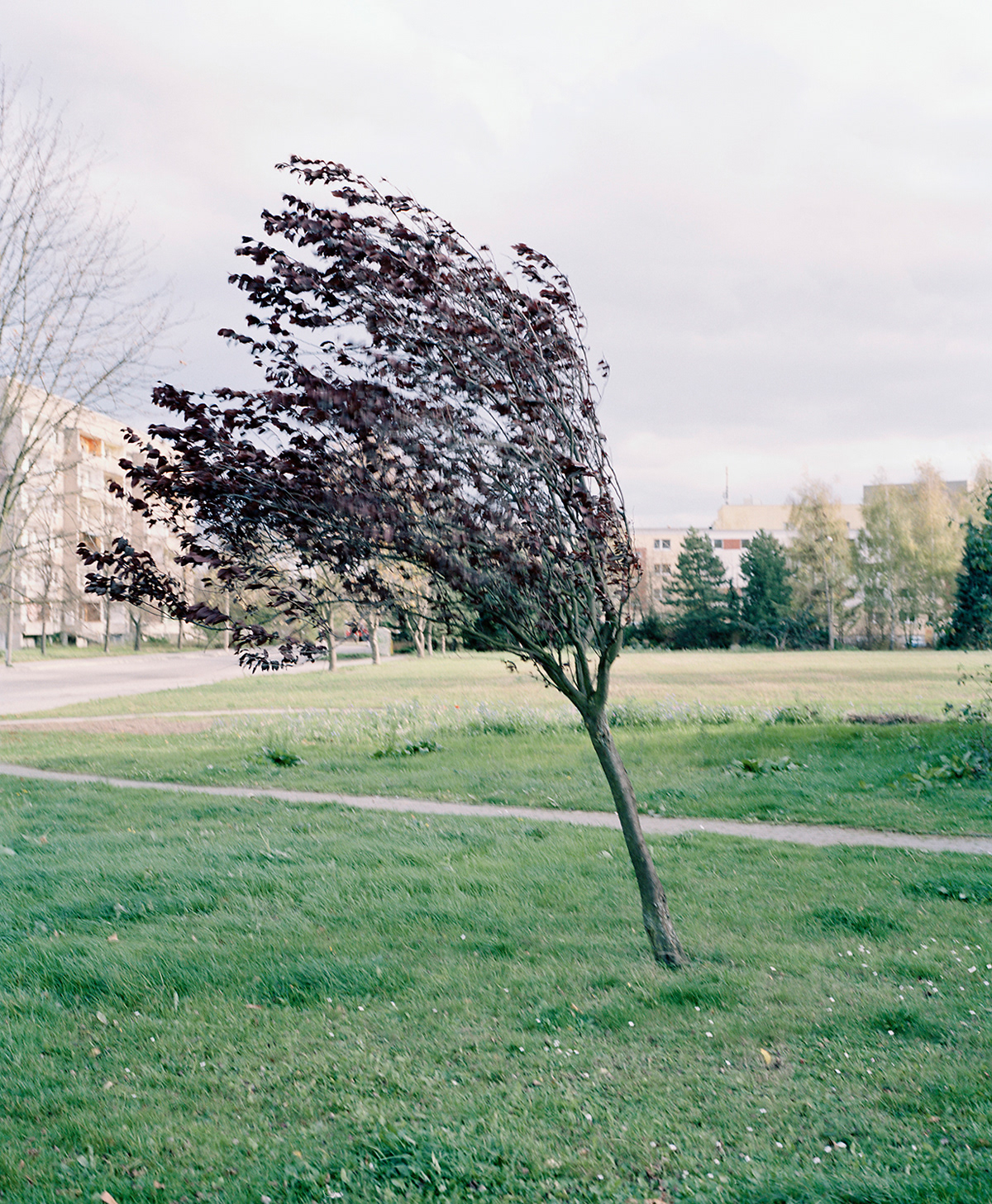
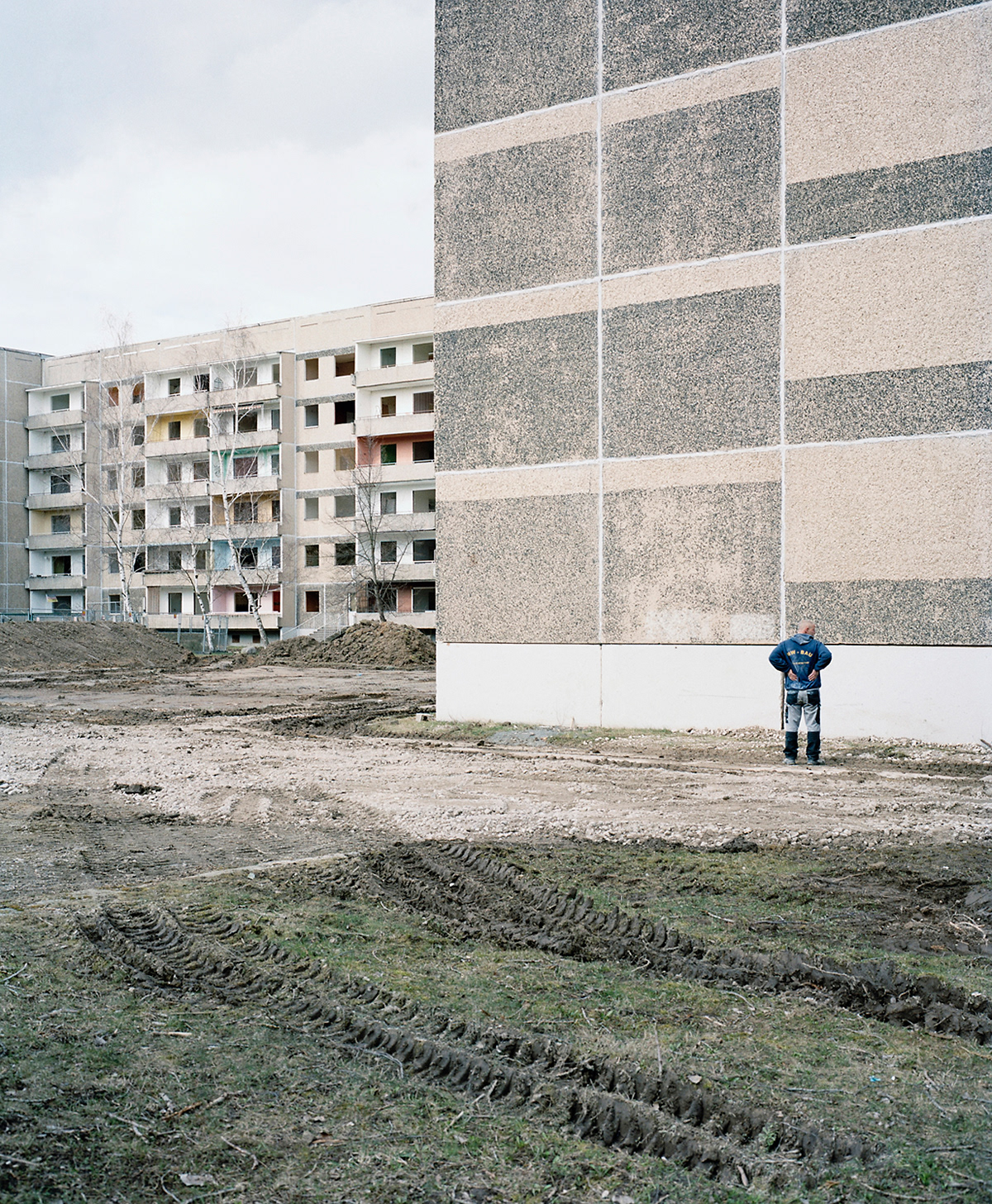


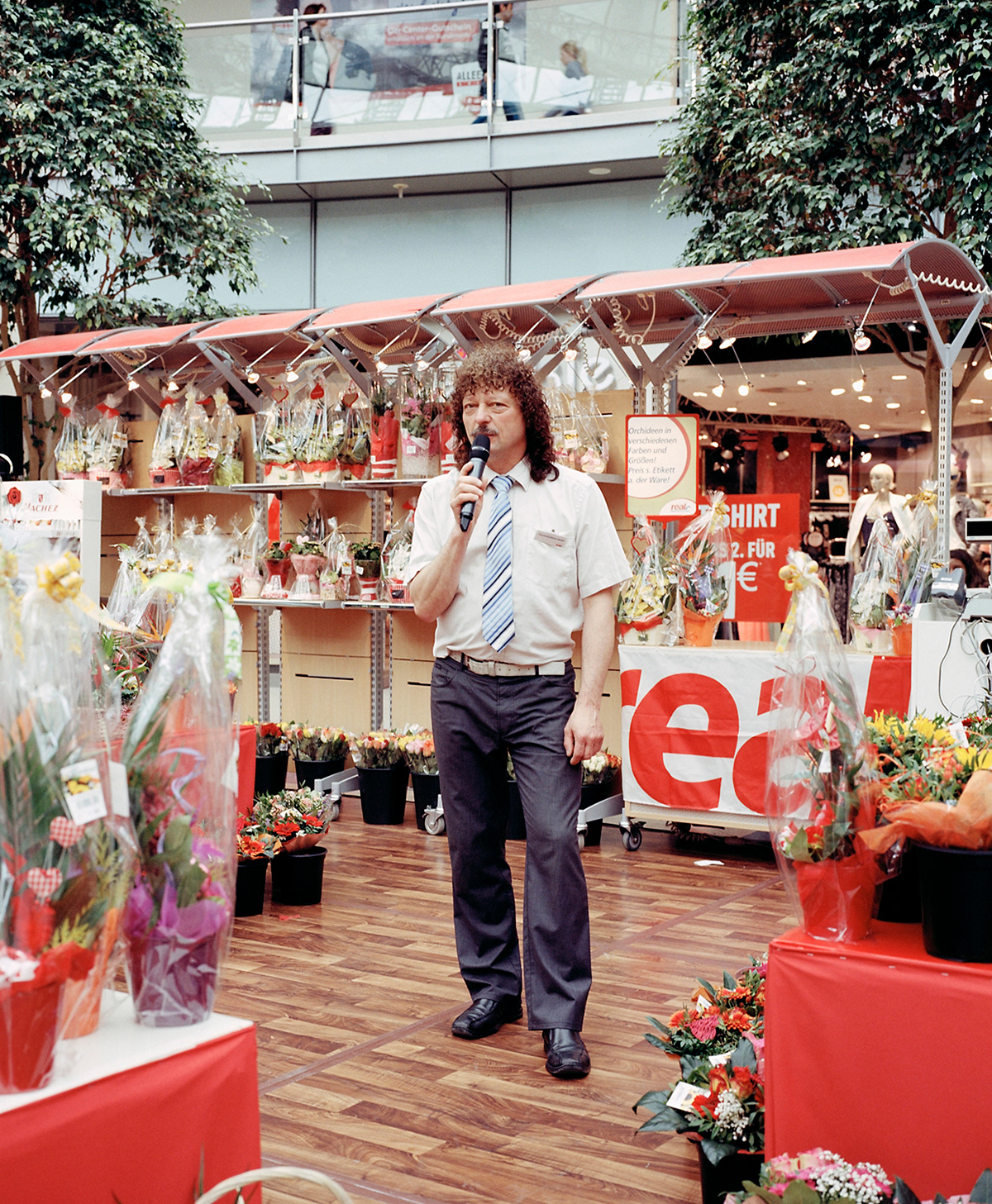
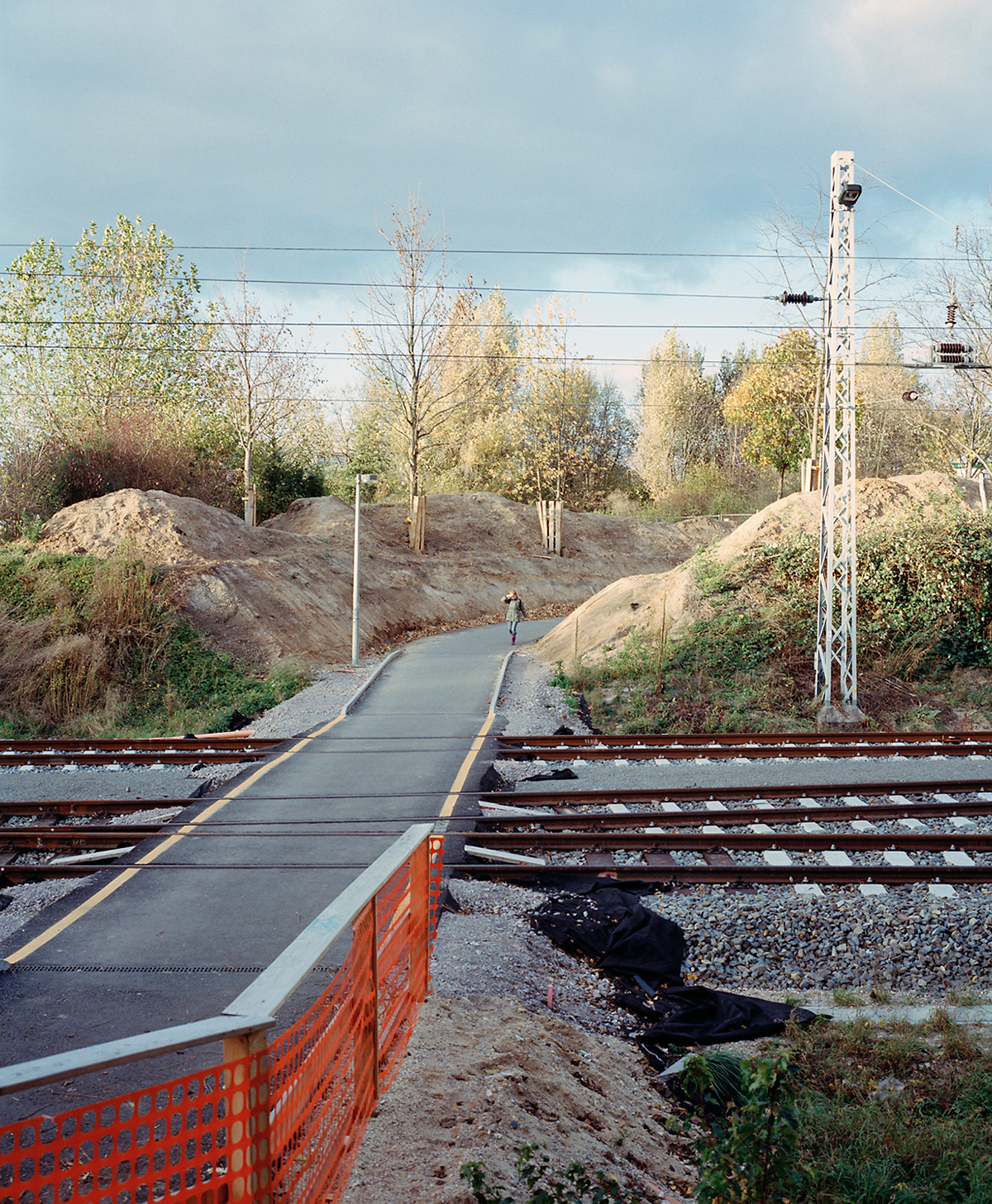
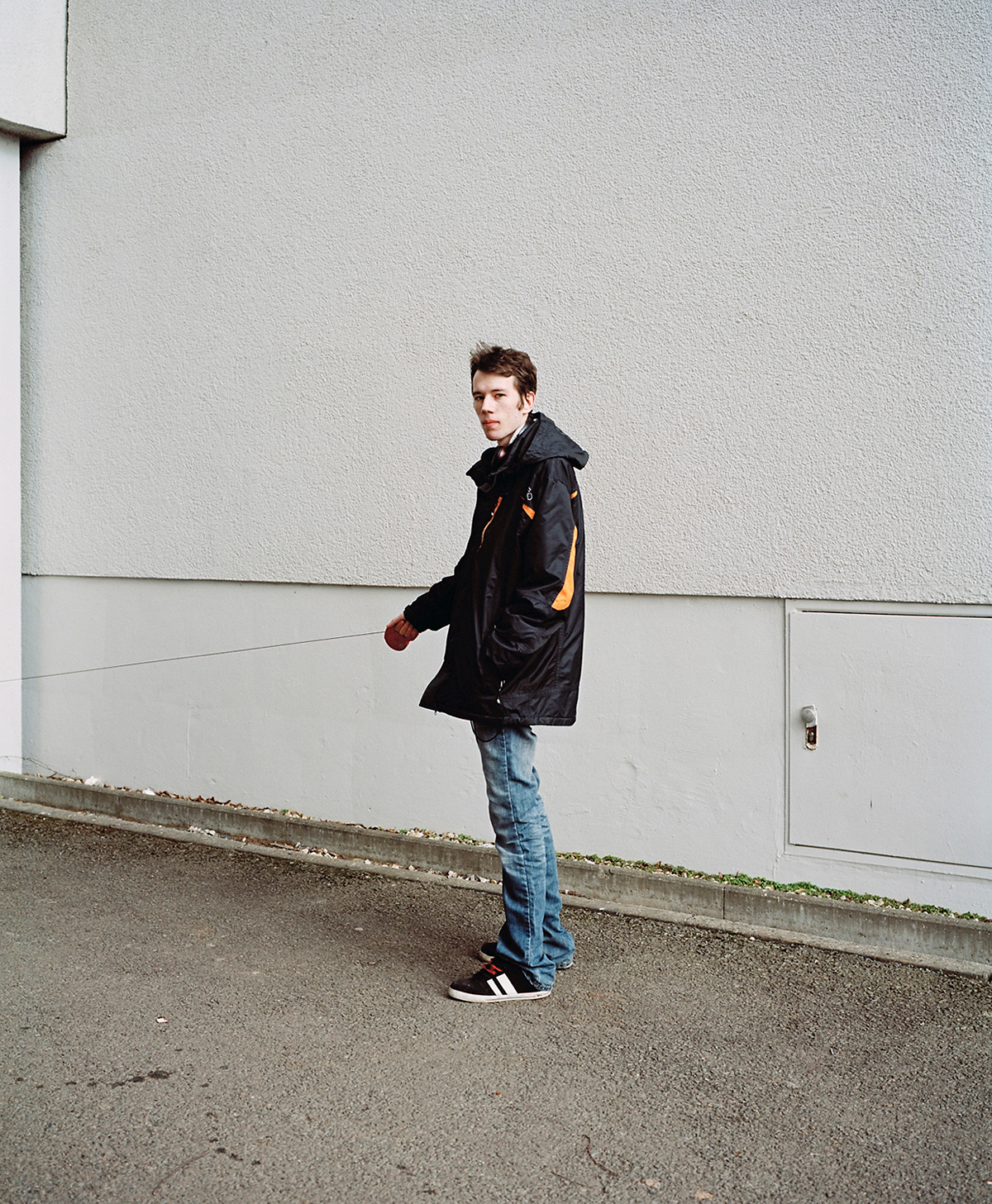
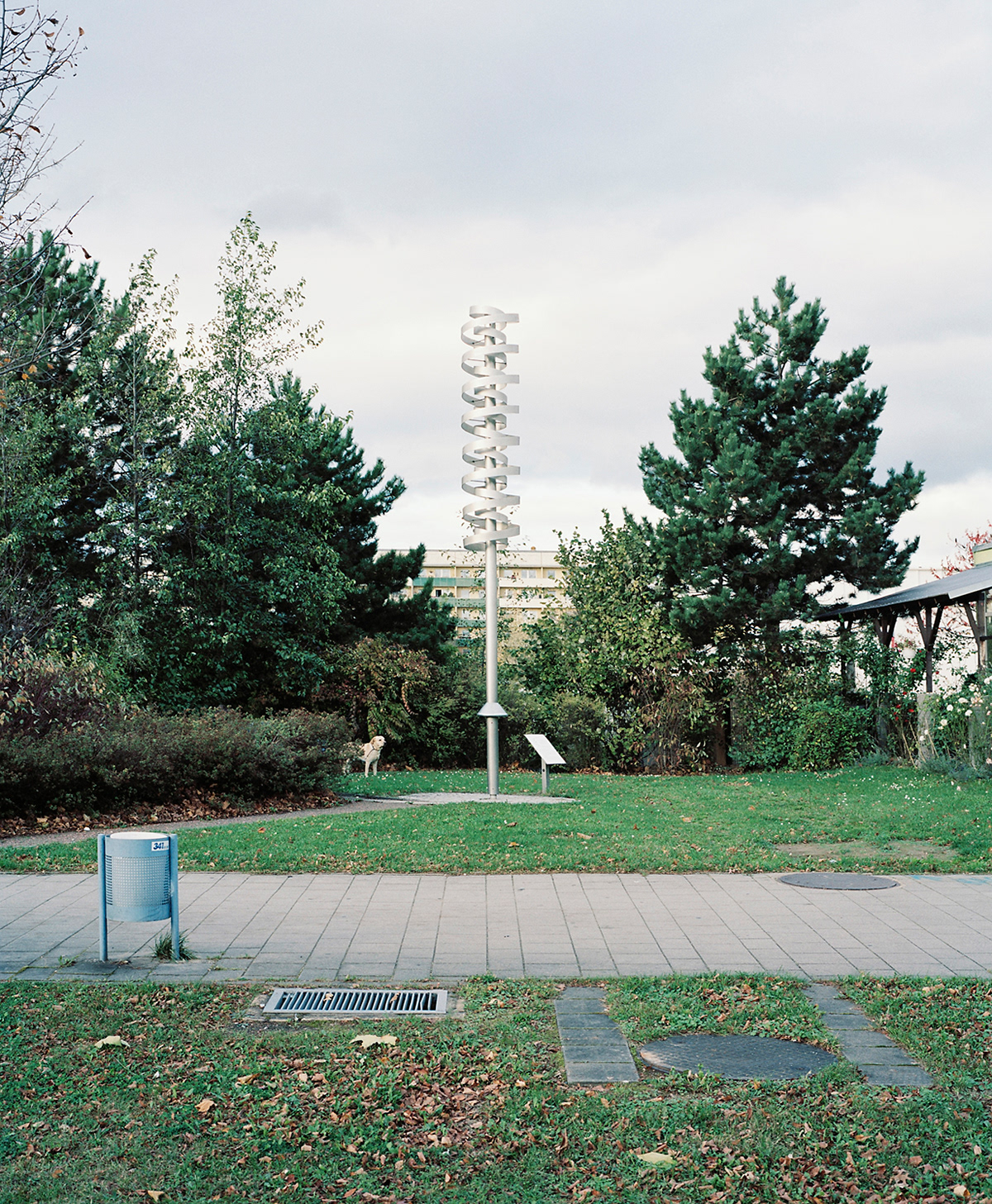
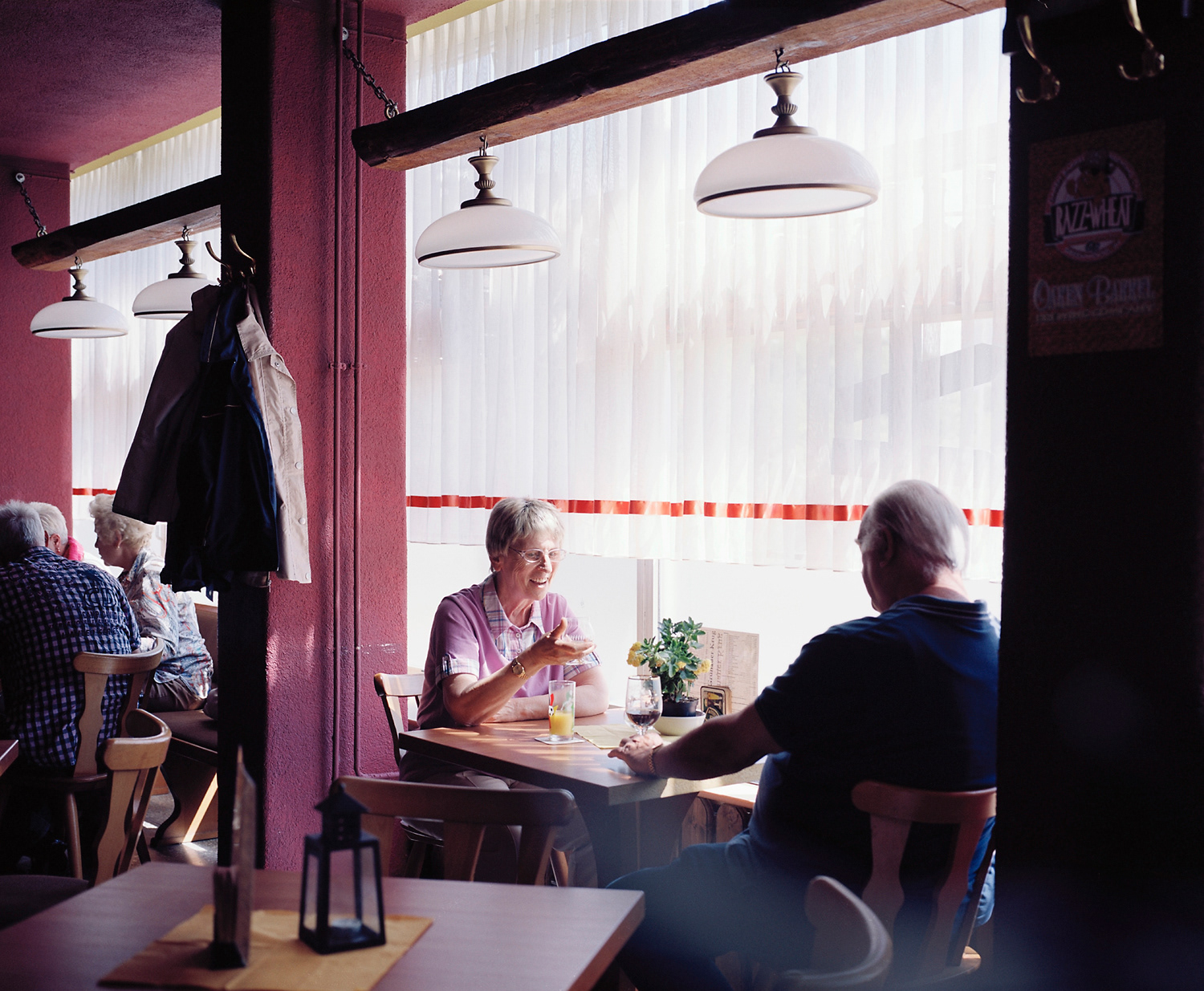
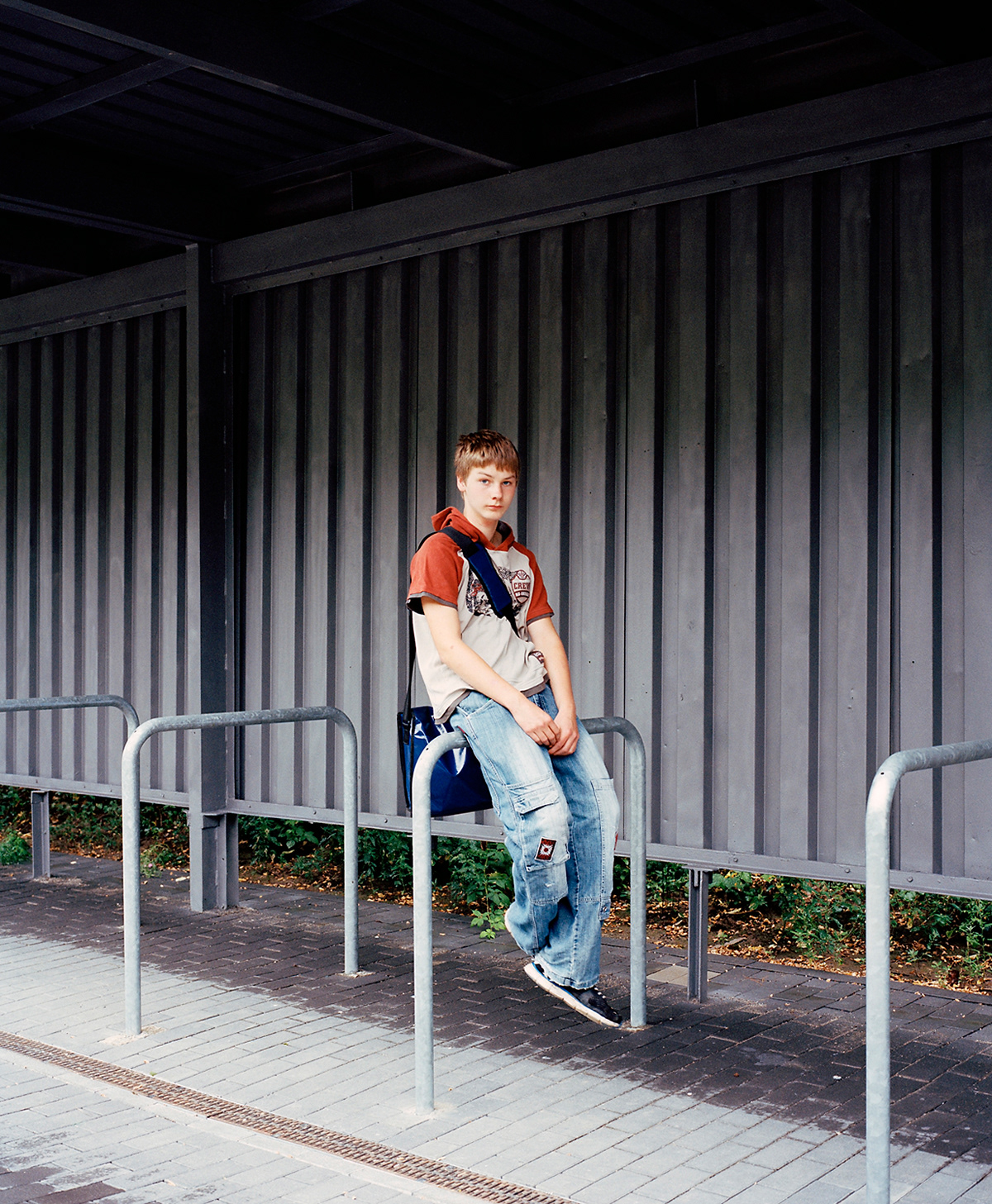
Prefabricated Housing, Witness to History
On the cultural history of the mass production of living space in the GDR
Essay by Daniel Hirsch
From afar, they are the silent witnesses of a forgotten era. They rise in immaculate rows from the green lawn, broken here and there by a strip of apartment blocks that snakes oward a lonely high rise. Functional businesses border a large square paved with concrete: a supermarket, a bakery, small stores, a fast food stand. People rarely pass by, and when they do, they appear lost in the vast concrete landscape.
At first glance, residents of the large prefabricated housing blocks in places like Leipzig’s Gruenau quarter or Berlin’s Marzahn quarter may not see them as the homes of the future they were thought to be at the time of their construction and long after.
With the fall of the Berlin wall and the German reunification, more and more narratives of prefab housing blocks began to appear that did not merely describe the failure of the socialist experiment itself, but that portrayed their aesthetic as one cause of their inhabitants’ abandonment of that experiment. Icons of social deterioration, they are often the backdrop for reports of right-wing violence, the downfall of the East German economy, and the demographic transformation associated with it.
LIFE IN THE BLOCKS AS A PROMISE
For a long time, prefab housing was the promise of a better life. Far into the 1980s, moving into one of these homes was seen as a great privilege. Unlike most older buildings, these had hot running water, apartments with private bathrooms, central heating, perhaps a balcony or sunroom, or even a garbage chute. These luxuries, previously almost unheard of, were available to very few renters of prewar apartments in East Germany.
With their strict separation of front and back building apartments, of basement and piano nobile, which differed greatly in quality and size, older buildings continued to reflect the social stratification of the German Empire. Due to urban noise levels, pollution caused by local manufacturing, and the use of odorous fossil fuels, the status quo of the Wilhelminian neighborhood became hopelessly undesirable. By contrast, new building projects in the GDR were a tangible promise to the populace that they could leave the old city behind and move forward into a brighter socialist future.
In addition to improvements in infrastructure and living conditions, these new neighborhoods were thought to offer their inhabitants a mixed social environment that was vibrant and successful. Prefab housing neighborhoods were places where young and old, laborer and intellectual alike, could live side by side. Although again and again, justified questions were raised about problems in the public housing allocation system in the GDR (and we can safely assume that certain individuals did enjoy preferential status for political reasons), the social reality of prefab housing also showed the advantages of an allocation principle based largely on chance. The current problems of ghettoization and gentrification as direct results of a housing allocation system based on renters’ purchasing power were unimaginable in the GDR of the 1970s and 1980s.
POLITICAL CAUSES OF THE PREFAB HOUSING BOOM
The switch to prefab housing can also been understood as a direct result of a decision made in 1955 at the first architecture conference in the GDR to industrialize construction. Although construction in the early years of the GDR was still quite complex in terms of ornamentation and architecture (for example, the housing on today’s Karl-Marx-Allee in Berlin-Friedrichshain or the ring building on Rossplatz in Leipzig), it quickly became clear that prevailing construction practices could not resolve the massive postwar housing shortage within a reasonable period of time. In consequence, numerous special industrialized housing projects were developed and new apartment buildings made of prefabricated components were built that were much less labor intensive to construct. This was an effort to make good on a promise made to the populace to construct and modernize three million homes and thus to permanently resolve the housing shortage in the GDR by 1990.
These new housing lines made of normalized parts came to constitute a construction boom of new, closed neighborhoods. These were built as suburbs, as the state funded building units were ill adapted to the physical conditions of the historic city center.
The reorientation of construction in the GDR in the 1960s and1970s brought about a paradigm shift in architectural language. Where in the first years of the GDR, architecture sought to reference historical building practices that formed part of an esteemed national tradition of using architecture to support a social process of democratization, the prefabricated buildings of the 1960s and 1970s negated any historical basis.
The lack of ornamentation created a blank space that was to be filled by the inhabitants. This pushed questions of the ornamentation of individual buildings and other structures to the background, while residential life as a new form of communal socialist existence with abundant public space and an infrastructure of public institutions came to the fore. The construction of childcare centers and communal laundries allowed working women to delegate a portion of their private housekeeping and parental duties. Meanwhile, it is believed that the socialist personality began to “seek connections based on common interests and practices between collectives, within the residential community, and throughout the neighborhood” (Merkel, 1999, Utopia and Need. The History of Consumer Culture in the GDR), thus contributing to the desired transformation into a true socialist society.
THE EXPERIENCE OF HOME IN THE SATELLITE TOWN AS A CHALLENGE TO CONSTRUCTION IN THE GDR
New residential settlements may have been able to satisfy basic needs like physical comfort on a whole new level, but were often unable to satisfy the desire for an experience of locality and urbanity. In the 1970s especially, there was an attempt to resolve this problem through the construction of central communal spaces. These show clearly the creative use of architectural space that was still possible for GDR architects within the limitations of industrial construction. Standardized plans were increasingly rejected and were replaced by architectural approaches developed for specific locations.
It was hoped that creating individual projects for these central spaces in different prefab housing neighborhoods would cause their inhabitants to accept their living environment and ultimately increase their satisfaction with the state. Each of these areas was intended as the architectural focal point of its neighborhood, something that could offer residents a new city center and that would secure their identification of the satellite communities as their new homes. Combining diverse social centers (culture and sport associations, supermarkets, etc.) with this marked architectural execution was a targeted method of making these centers into idealized local spaces for residential experience in which the promised benefits of life in a socialist state could become tangible.
Even though the construction of many of these central social spaces and the addition of green spaces in the new neighborhoods continued to take place years after the housing itself had been constructed, these are still signs of an earnest attempt by the GDR city planners (within an extremely limited budget) to enable residents to experience the socialist state in places outside of the city proper.
ARE WE REDISCOVERING PREFAB HOUSING?
While the 1990s brought a rapid decline in the use of prefabricated components in housing construction, and while demolition often seems to be the only viable option, there have been recent indications that, at the very least, the prefab housing neighborhoods close to urban centers will become more attractive in the foreseeable future. In light of the rent explosion in urban areas and the improvements in infrastructure in these areas after the German reunification, young pioneers are beginning to rediscover the draw of these housing units. For these people, GDR prefab housing blocks could become the same laboratories of the future that the abandoned urban centers were for their parents a generation before.